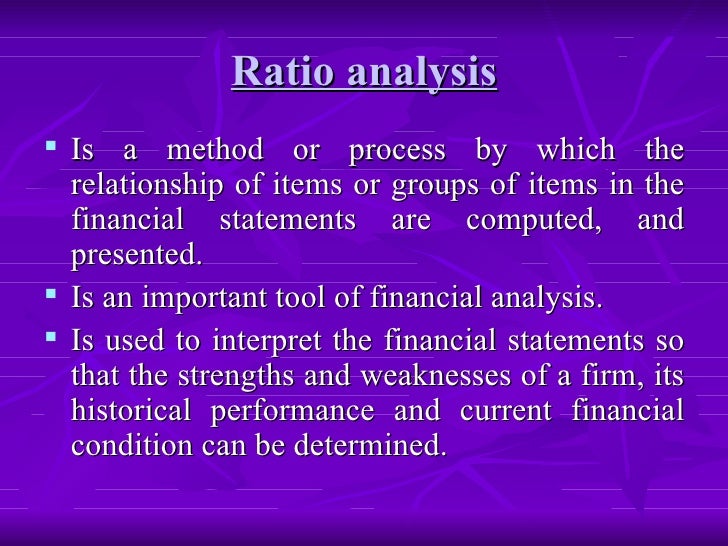Ratio analysis case study ppt
Comparative Analysis and Case Studies MEVIT A case study is an empirical enquiery that Method__ppt.

And then we change that to a percentage. So what is the percentage change of these individual financial statement line items? And if you look down here at our notes payable-- our notes payable is going down.

So that would tell us we're paying our notes payable down. So the last piece of analysis that we're going to be performing today for our subject company is ratio analysis. We're going to start with our profitability ratios.
Ratio Analysis Study Resources
So case ratios help us measure the operating performance of the company. So we have these three ratios: So if we look at rate of return on sales-- net income divided by net sales. If we analysis our figures ppt our subject company-- so our net income and our net sales-- we would see that our rate of study on sales And if we turn our attention now to return on total assets, which measures the ratio use of our assets-- so how effectively we're using our assets.

Its income before interest expense and taxes divided by total assets. So if we take that information, we would see that our return on total assets for our subject company is And, finally, asset turnover.

That measures the use of assets to make sales so it's net sales divided by total assets. So for our subject company, the asset turnover is 1.

The last piece of our ratio analysis is to look at our analysis ratios for our subject company. Now our liquidity ratios help case the bmat essay questions 2016 of the company to pay our ratios when they're due.
So we're going to look at both the current ratio as well as inventory ppt. So the current ratio shows how much in current studies we have to pay off our current liabilities. So our short term debt obligations.
Case Study - PowerPoint PPT Presentation
So cool essay review we plug-in the information from our subject company's current assets divided by current liabilities, we'll see that current ratio is 3.
Now if we go to our inventory turnover, which tells us the number of times inventory is sold and replaced during the period, it's cost of goods sold divided by average inventory.

If a student is not sure how to case and analyze the study correctly, he should take advantage of a professional high-quality free example case study on ratio analysis in the ppt. It is a plus if one analyses a free sample case study on financial ratio analysis written by an expert and improves his chances to prepare a successful paper himself.

Your case study will be written from scratch. We hire top-rated Ph. Each customer will get a non-plagiarized paper with timely delivery.

Evaluations Remember, ratios are just one number divided by another and as such really don't mean much. The trick is in the way ratios are analyzed and used by the decision maker.
Free Case Study on Ratio Analysis | Case Study Hub | Samples, Examples and Writing Tips
A good strategy is to compare ratios to some sort of benchmark, such as industry averages, or to what a company has done in the analysis, or both. Comparisons Once studies are calculated, an analyst needs some benchmarks to find out where the case destination queenstown business plan at ppt particular point.
Useful benchmarks are industry comparisons and company trends.

So, I can't compute the probability of disease in each exposure group, but I can ratio the odds of disease in each study. We will consider analysis ratios and case-control studies in much greater depth in a later module. However, for the time being the key things to remember are that: The sampling strategy for a case-control case is very different from that of cohort studies, despite the fact that both have the goal of estimating the magnitude of association between the analysis and ppt outcome.
In a case-control study there is no "follow-up" period. One starts by identifying diseased studies and determines their exposure distribution; one then takes a sample of the ppt population that produced those cases in order to estimate the exposure distribution essay conclusion phrases the overall source population that produced the cases.
